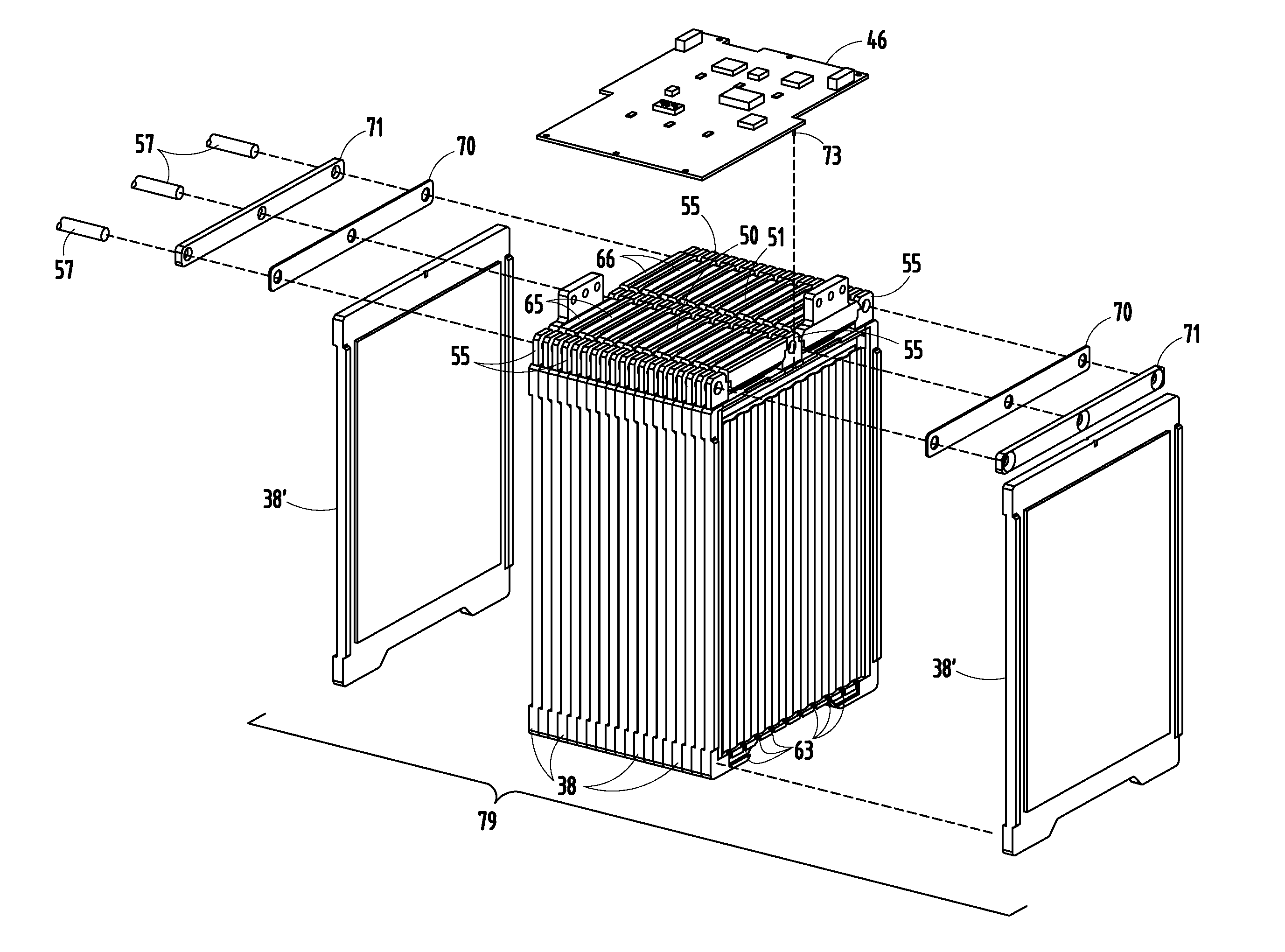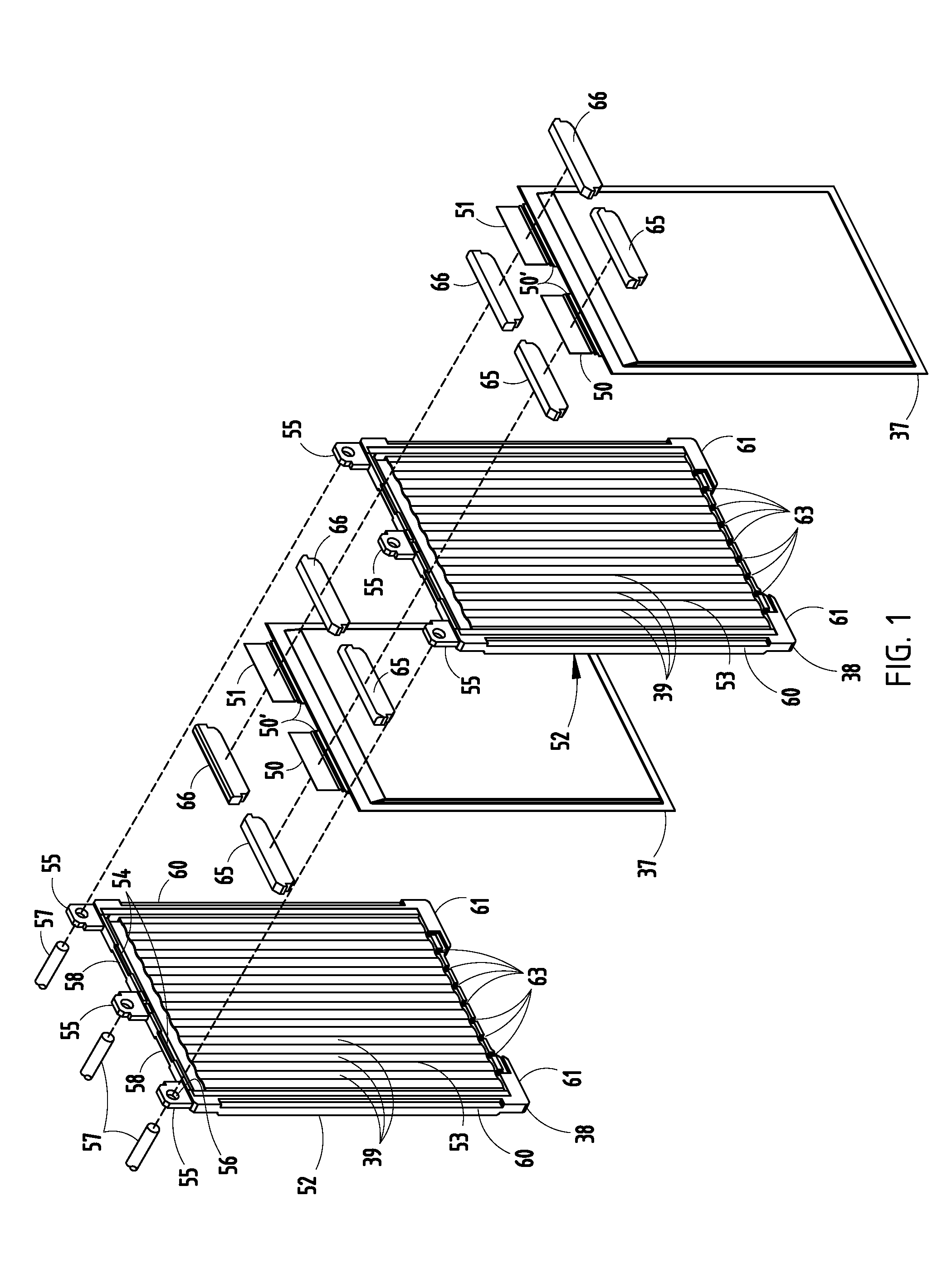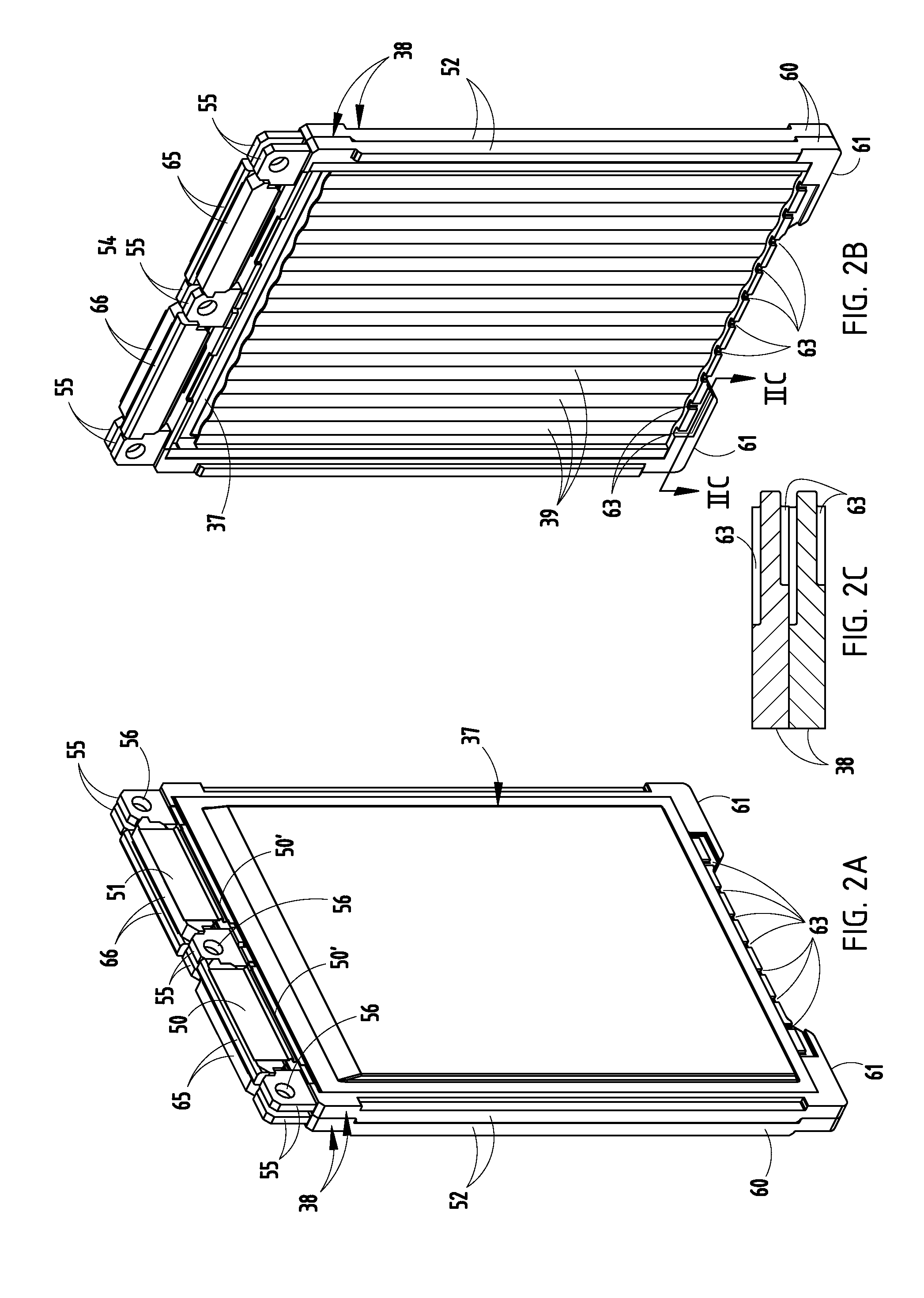Temperature-controlled battery configuration
a temperature-controlled, battery technology, applied in battery/fuel cell control arrangement, secondary cell servicing/maintenance, cell components, etc., can solve the problems of li-ion batteries that cannot be used in electric-driven passenger vehicles, can not meet the needs of several problems, and can rupture, ignite, and/or explod
- Summary
- Abstract
- Description
- Claims
- Application Information
AI Technical Summary
Benefits of technology
Problems solved by technology
Method used
Image
Examples
Embodiment Construction
[0033]A vehicle 30 (FIG. 25) includes a vehicle body 31 adapted to carry passengers and / or cargo, and an electric battery-powered motor 32 for driving vehicle wheels 32A. A temperature-controlled battery configuration (also called “battery apparatus”) on the vehicle comprises a battery assembly 33 including a case 34 (also called “battery casing” or “container” or “enclosure”) with a liquid inlet 35 and a liquid outlet 36, and a plurality of standard Lithium-ion cell packs 37 separated by spacers 38 positioned in the case 34. The cell packs 37 and spacers 38 define a plurality of channels 39 therebetween, with the spacers 38 carrying at least a part of the weight of the cell packs 37. The channels 39 are adapted to communicate an electrically-insulating thermally-conductive liquid 47 from the inlet 35 along sides of the cell packs 37 to the outlet 36 for controlling a temperature of the cell packs 37. A fluid pump 40 is driven by the electric motor 32, and motivates the liquid 47 th...
PUM
| Property | Measurement | Unit |
|---|---|---|
| temperature | aaaaa | aaaaa |
| thermally-conductive | aaaaa | aaaaa |
| electrical integrity | aaaaa | aaaaa |
Abstract
Description
Claims
Application Information
 Login to View More
Login to View More - R&D
- Intellectual Property
- Life Sciences
- Materials
- Tech Scout
- Unparalleled Data Quality
- Higher Quality Content
- 60% Fewer Hallucinations
Browse by: Latest US Patents, China's latest patents, Technical Efficacy Thesaurus, Application Domain, Technology Topic, Popular Technical Reports.
© 2025 PatSnap. All rights reserved.Legal|Privacy policy|Modern Slavery Act Transparency Statement|Sitemap|About US| Contact US: help@patsnap.com



